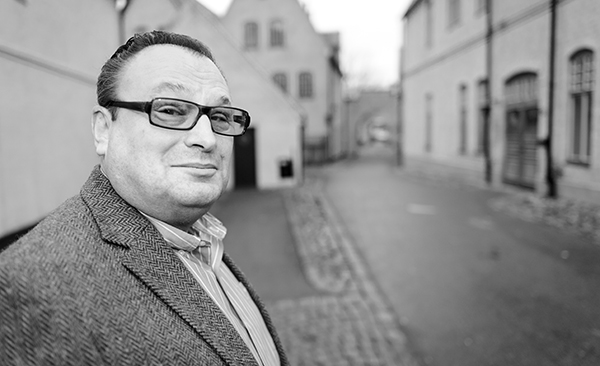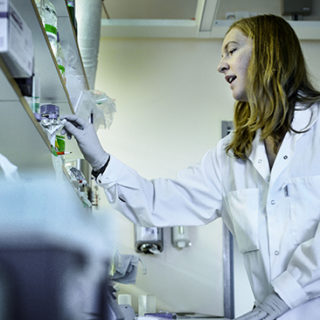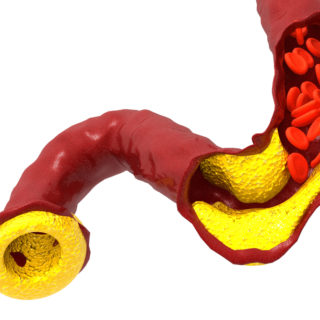ANDIS opens doors to more informed diabetes treatments
Diabetes is a complex disease. However, with the research project ANDIS (All New Diabetics in Skåne) the doors are now open to give more patients a correct diagnosis which in turn leads to more informed treatment. ANDIS registers all new cases of diabetes in Skåne and is a huge knowledge bank for researchers who, for the first time, can begin to understand the many faces of the disease.
Diabetes is in fact several diseases with different underlying causes. What the variations have in common is that the patient’s blood sugar level is too high. Diabetes is the most common non-contagious disease in the world. The presence of especially type 2 diabetes accelerates in countries with an improved economy, where people start to eat the wrong kind of food and become less active. Even in Sweden, diabetes is a ticking time bomb. One in nine Swedes either have or are at risk of developing the disease. And the number continues to grow.
WHEN GLENN BILLQVIST received the call from his local healthcare clinic notifying him that he has diabetes it came as a surprise.
“I hadn’t experienced any symptoms whatsoever, everything seemed normal. But at an annual medical check-up they discovered the disease.”
Glenn Billqvist is a person with a lot of energy and a great deal of commitment at the prime of his life. His work involves travelling every week in the Nordic region and Europe, and sometimes long and uncomfortable hours on planes and at airports. Contracting diabetes involves a lifestyle adjustment – a change that can sometimes be difficult. However, Glenn has found a way of living that suits him and his everyday life.
“Right after I was diagnosed I had to go over my daily routines and make certain changes. I now have to think more about what I eat, how much and when. Two pills a day keeps the disease in check, and I’ve purchased an exercise bike which I actually use.”
Glenn Billqvist is one of the thousands of diabetics who is part of the research project ANDIS – a register currently including 90 % of all healthcare providers in Skåne and, at the time of completion, will provide a detailed mapping of 20 000 diabetics. This information will provide a better overview of all the different types of diabetes and the most effective types of treatment.
LEIF GROOP, internationally renowned diabetes researcher and professor at Lund University, is the brain behind ANDIS which started in 2008.
“When I was working at a healthcare clinic in the 70s, I discovered that diabetes is not as simple as type 1 and type 2.”
And this was how Leif Groop’s lifelong endeavour within diabetes research took off, significantly contributing to increased knowledge of the genetic impact on type 2 diabetes. Furthermore, through his research he discovered an unknown type of diabetes called LADA, Latent Autoimmune Diabetes in Adults – a mixture between type 1 and type 2 diabetes. Through ANDIS, researchers and physicians are getting several steps closer to understanding the disease profile of the individual patient and the right form of treatment.
Apart from determining the patient’s age, weight and time of onset of the disease, a blood sample is taken from the patient.
“It might not seem very sophisticated, but with all these blood samples, we have been able to prove that there are five different types of diabetes. Obviously, it’s incredibly important that the patients are given the correct diagnosis from the start, as it affects what type of treatment they receive”, stresses Leif Groop. “The research will help regulate the allocation of resources in healthcare so that patients receive the right help on time. The documentation we have produced has already begun to affect the allocation dimensions within the healthcare sector.”
FOR A LONG TIME, Sweden has been a pioneer when it comes to getting diabetics involved in their own disease. In some forms of diabetes, the patient can assume greater responsibility and affect their disease with the help of exercise and diet. Ultimately, Leif Groop and his colleagues would like to see an app in which test results and other values are entered and where diabetics can keep better track of their own disease.
“We have already started the process of designing an app. I believe it will be ready within five years and then people all over Sweden will be able to receive more accurate medication and treatment. When it comes to diabetes treatments, they will continue to evolve as we discover new forms of the disease. The genetic variables are very helpful in this context.”
Leif Groop and his research team have also looked towards the east and China, and have already established a partnership with a university.
“Diabetes is twice as common in China as in Sweden, and every year there are 50 000 new patients, mainly with type 2 diabetes which is largely hereditary. In order to become part of clinical practice we need an app.”
Glenn Billqvist is waiting to have a new blood test taken a bit further down the line in order to identify what type of diabetes he has. So far, however, life proceeds as usual and he is responding well to the medications he has received.
“57 years old I am the youngest in a group of buddies who drive old race cars from the 30s and 40s. I can imagine that several of us have chronic diseases, but it’s not something we talk about. We’re currently planning the next race.”
Text: Bodil Malmström
Photo: Kennet Ruona
Facts
-
Diabetes around the world
-
- In 2015, more than 415 million people were living with diabetes, which corresponds to 1 in every 11 adults
- By 2025, the number will increase to 700 million, or 1 in 10 people
- The number of people with type 2 diabetes is increasing in all countries
- 77% of people with diabetes live in low- and middle-income countries (2014)
- 193 million people have diabetes without knowing it
- In 2015, diabetes resulted in 5 million deaths, i.e. 1 person every 7 seconds
- Diabetes accounted for at least $612 million in healthcare costs in 2015
- Every year, 86 000 children develop type 1 diabetes
Source: International Diabetes Federation
NCD RisC. Lancet 387; 1513–30, 2016.






